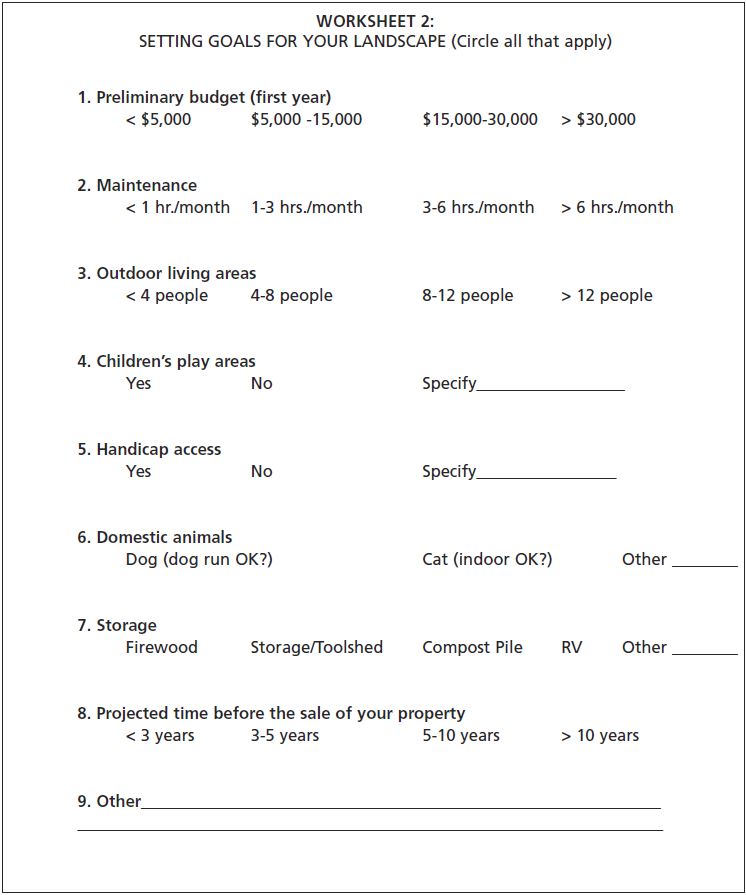The PermaDesign Weblog, with Nate Downey and Melissa McDonald!
Roof-Reliant Landscaping™ Step 12A: Planing and Designing Your Landscape: Phase 1: Clarify the Scope

The first phase in designing your landscape should be to establish goals and objectives that help clarify the scope of your project. These goals will help set the course for your design and ensure that you create a roof-reliant landscape that is compatible with your lifestyle.
To help you get started, here is an important list of planning and design questions:
• Will your landscape consist of only roof-reliant plants?
• Do you plan on installing your landscape in phases? If so, over how many years?
• What have you determined is the appropriate size of your cistern?
• Do you have a strong preference for an aboveground cistern or a below-ground cistern?
The answers to these questions may help you toanswer the basic design considerations that follow.
Preliminary Budget
Unless you are already familiar with the costs of landscaping and cistern systems, your preliminary cost estimates will probably have less to do with the actual costs of roof-reliant landscaping and cistern systems than it will be based on how much money you think you will have available for your project. This is the most realistic starting point available to you at this stage in the process. Knowing that you can adjust your budget as you receive more information, you can now begin making decisions about your roof-reliant landscape.
Your Commitment to Maintenance
Before designing a landscape, it is important to consider how much time you are willing to spend on landscape and cistern system maintenance. Many people find that the best landscape maintenance plan consists of a combination of doit- yourself time and some occasional unskilled labor and/or professional assistance.
Outdoor Living Areas
Sometimes an excellent place for an underground cistern is under an outdoor living area—a place where people can relax, read, play games and/or have a meal. Such a location depends on two factors: (1) how often the system will need maintenance and (2) how expensive is it to remove and replace the surface of the outdoor room. For example, it would be a mistake to install a cistern system that needs regular maintenance under an expensive flagstone patio, but installing a cistern under an easily removable shredded-bark surface would be appropriate.
Children’s Play Areas
Cisterns can be situated appropriately under temporary play structures, such as a lightweight swing set, a trampoline or a playhouse. However, placing such an item so close to where children play requires extra diligence about ensuring that your cistern’s serviceway remains locked and inaccessible (except when being serviced).
Handicap Access
Handicap access (if needed) should be taken into consideration at the outset of the design process. Retrofitting a landscape to offer such access can be an expensive proposition.
Domestic Animals
Domestic animals can have a profound effect on any landscape. When establishing your water distribution lines (especially drip irrigation lines and other components that will be aboveground), take into account the possible effects that domestic animals might have on them.
Storage
The landscape is often a place where certain large items need to be stored, including firewood, compost piles, toolsheds and recreational vehicles. Aboveground cisterns can sometimes hide these eyesores, while an underground cistern can sometimes be buried underneath them.
Use Worksheet 2 below to help record and clarify the goals for your new landscape.
10/21/2015 | (0) Comments











Comments